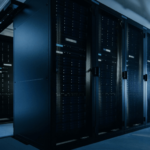Beyond the fine print of colocation contracts is a line of unplanned expenses and colocation costs waiting to be implemented. Unforeseen charges aren’t necessarily new in the colocation industry. However, you can recognize how they’re made and how to avoid them.
Data center colocation ads often come with incredibly reasonable prices, but before jumping on the next best price, ensure you have a blueprint of how the data center works.
Understanding the basic operations of a colocation center is essential to discerning how its services fit into a price tag. Nonetheless, here are some vital hints that can help streamline your colocation fees:
Rack Size and Capacity
Spacing is a significant element of colocation. In colocation data centers, the space where your hardware is kept and maintained is measured in rack units or square footage.
Most companies enjoy having a private and locked space within the colocation center, and that’s understandable—however, the bigger the space you take, the bigger your fees.
While a private rack space comes with extra room and security, it’s cost-efficient to stick with the required rack size that keeps your equipment functional.
Data Center-Oriented Bandwidth
The bandwidth your company consumes is usually a part of your colocation provider’s monthly subscription fees. Some companies prefer using the cross-connect system to avoid latency and downtime, but that would cost a lot to set up and maintain.
It’s only logical that your colocation provider’s bandwidth would be relatively cheaper compared to having a dedicated Internet cable set up just for you. Of course, it’s also reasonable to want to avoid latency, but here’s another way to go about it.
Latency within a data center is a rare possibility. If you have any latency, there is a great chance it’s because you have an overstretched server.
Running all your company’s software and applications on one server would slow it down, so do well to turn off dormant applications. You can also arrange for your colocation provider to set a bandwidth limit for less active applications.
Power and Cooling Optimization
Power is the leading factor in colocation costs and fees. It takes quite an amount of power to keep a stocked data center cool and functional. It takes even much more to keep it on 24/7. There’s little you can do about your hardware power consumption. However, you can always choose a colocation provider with a modern cooling system that requires less power.
The traditional cooling system is less costly to set up. However, it drains too much power, which automatically falls on your fees.
You could save much more with Coloco. Our plans are more than affordable. They are designed to help you save more.



